Summary
Throughout the production process, the role of the cinematographer is to control the lighting an increase the tension with various camera angles and movements.
Tracking Shot #72 Film Example: Dunkirk
I plan to use this by tracking Alice when she is walking to the table.
Close-Up Shot #58 Film Example: Sherlock Holmes – A Game of Shadows
I plan to use this by doing a close-up of Alice in a graduation cap. I also plan to incorporate it after Alice realizes it was all a dream.
Pan Shot #68 Film Example: Magnolia
I plan to pan from the phone with the date to Alices face.
Zoom Shot Film Example: Vertigo
Test Shots
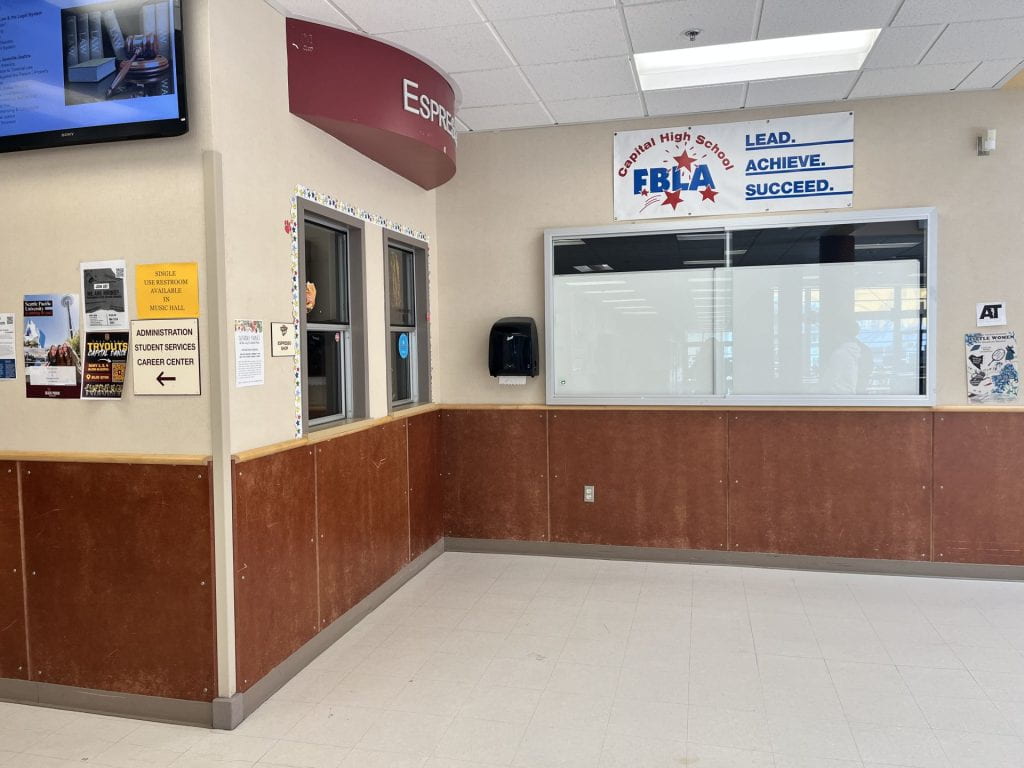
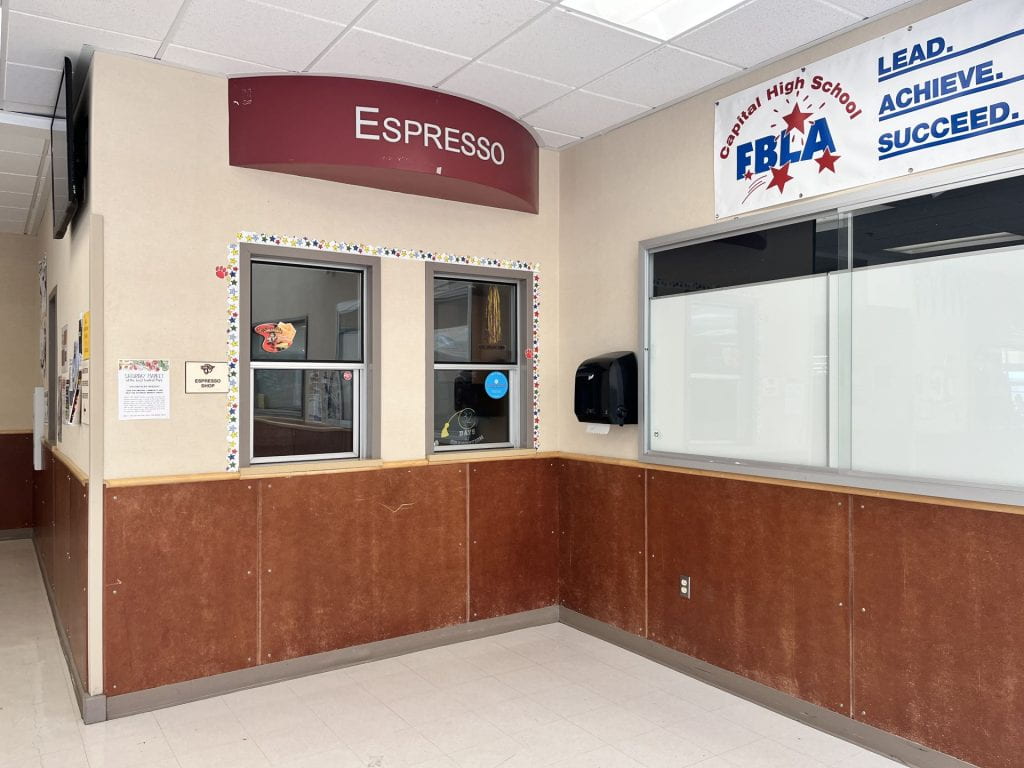
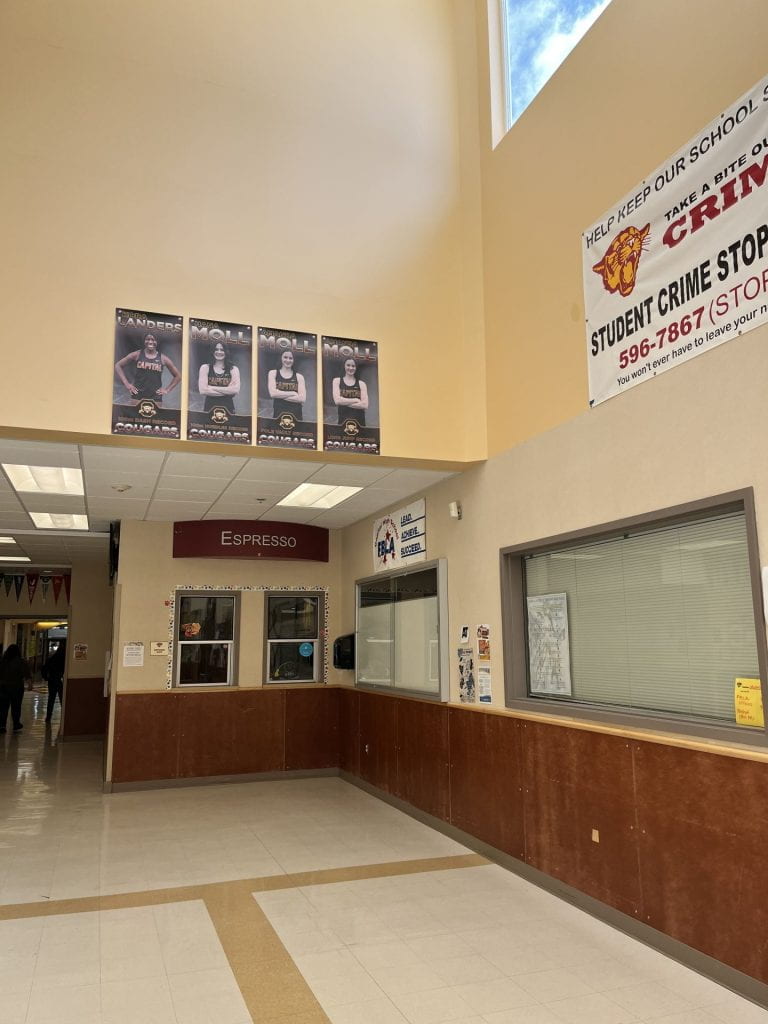
Lighting Tests
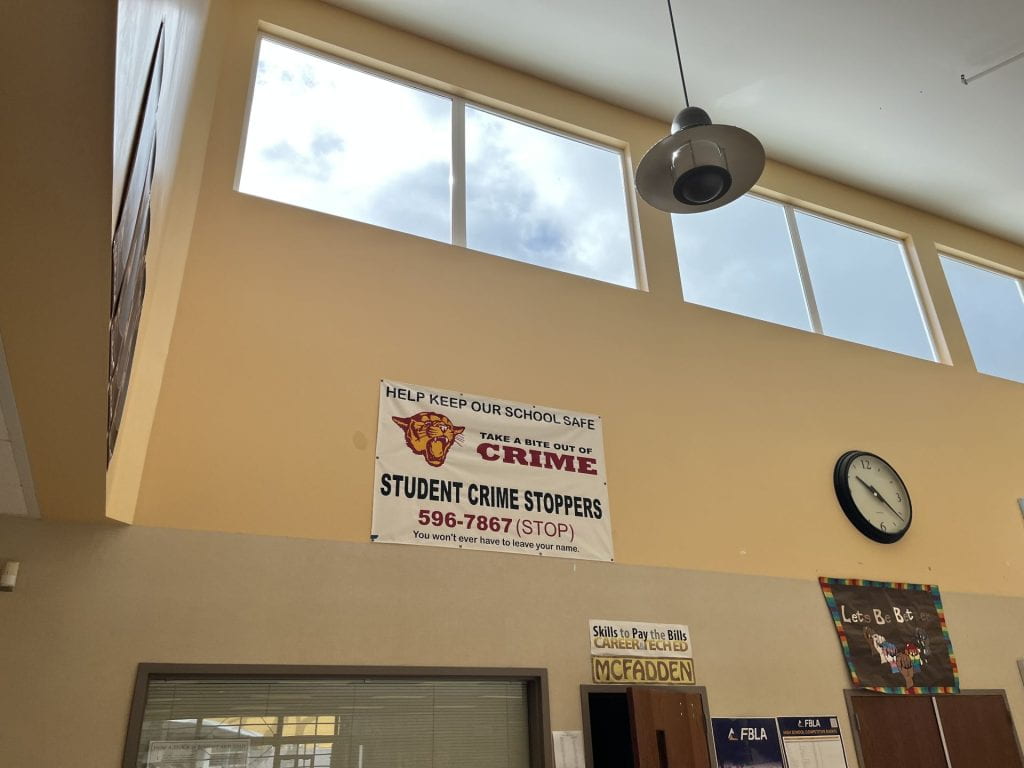
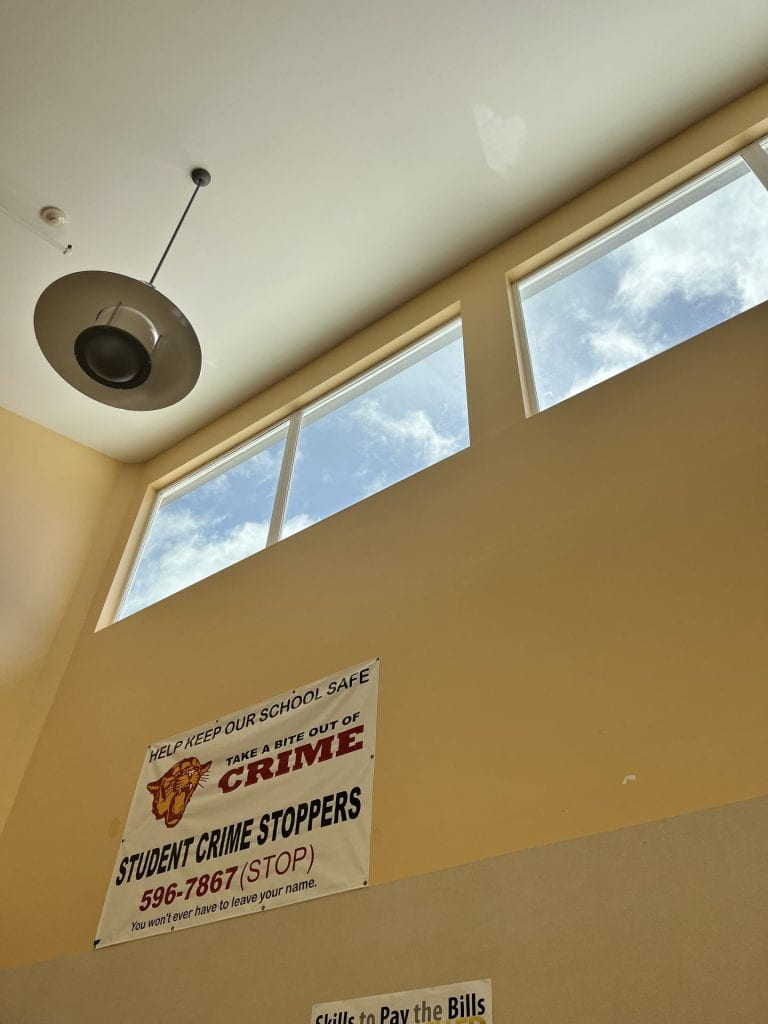
Equipment Checklist
Phone/Camera
No necessary added light, filming location is in cafeteria which is lit enough to create a good quality shot
Table
Notebooks, paper, pencils for assignments
Diploma
Cap and Gown
Second Phone to be used as a prop
Collaboration with Director
Discussed costuming, and props such as having a table in the scene to portray the characters work space (mine-en scene), location ideas – decided on the cafeteria, as well as any necessary lighting needed with director during the brainstorming process – we didn’t feel any added lighting was needed as the cafeteria is already well lit due to the sky lights.
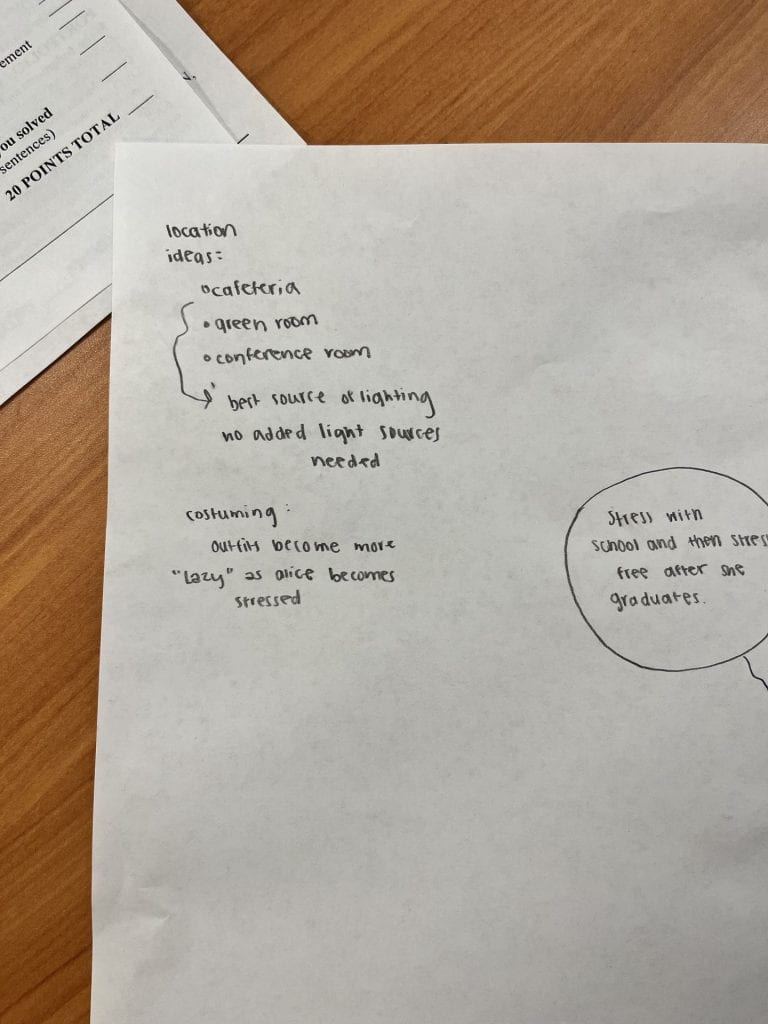
Set-up Sequence Workflow
- Set up table in corner of cafeteria
- Grab phone to record
- Set up audio with boom stick and mic
- Ensure phone is focused
- Begin recording
Map of Each Location

Storyboard Notation


What I Learned
Throughout pre-production my team and I had to brainstorm various ideas and techniques we could use to help raise tension in the film. We struggled to create ideas that would make a film relatable to the audience. However, through talking about what we were experiencing as seniors, we eventually settled on the feeling of “senioritis.”